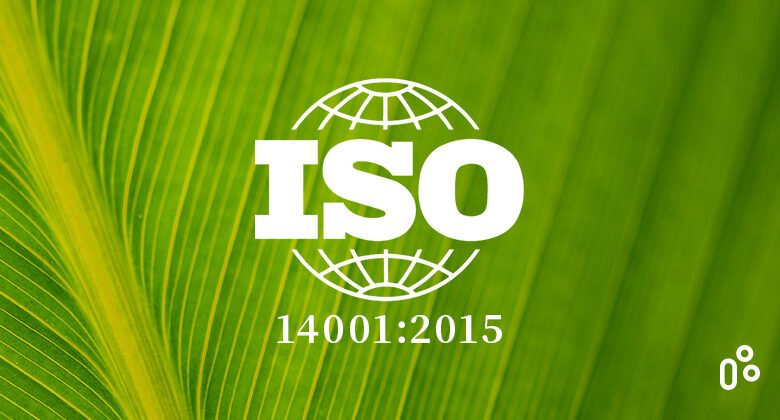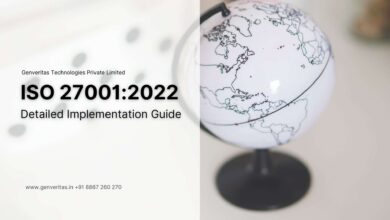ISO 14001:2015 Certification: Enhancing Environmental Management and Sustainability

In today’s world, environmental concerns and sustainability have become crucial considerations for organizations across various industries. The ISO 14001:2015 certification provides a framework for organizations to effectively manage their environmental responsibilities and demonstrate their commitment to environmental protection. This blog explores the significance of ISO 14001:2015 certification and its benefits for organizations aiming to improve their environmental performance.
Understanding ISO 14001:2015 Certification: ISO 14001:2015 is an internationally recognized standard for environmental management systems (EMS). It sets out the criteria for implementing an effective EMS that helps organizations identify, prioritize, and manage their environmental risks and impacts. The standard provides a systematic approach to ensure compliance with environmental regulations, reduce environmental footprint, and continuously improve environmental performance.
Key Elements of ISO 14001:2015:
- Environmental Policy: Organizations must establish an environmental policy that reflects their commitment to environmental protection and outlines measurable objectives and targets.
- Planning: This stage involves identifying environmental aspects and impacts, conducting risk assessments, and defining operational controls to minimize adverse environmental effects.
- Implementation and Operation: Organizations implement the EMS, allocate resources, train employees, and establish communication channels for effective environmental management.
- Checking and Corrective Action: Regular monitoring, measurement, and evaluation of environmental performance are essential to identify areas for improvement and implement corrective actions.
- Management Review: Top management reviews the EMS to ensure its continued suitability, effectiveness, and alignment with organizational goals.
Benefits of ISO 14001:2015 Certification:
- Environmental Compliance: ISO 14001:2015 helps organizations comply with environmental regulations, reducing the risk of penalties, fines, and legal implications.
- Improved Environmental Performance: By systematically identifying and managing environmental impacts, organizations can reduce waste generation, conserve resources, and minimize pollution.
- Cost Savings: Effective environmental management often leads to operational efficiencies, reduced energy consumption, and optimized resource utilization, resulting in cost savings.
- Enhanced Reputation and Credibility: ISO 14001:2015 certification demonstrates an organization’s commitment to environmental responsibility, enhancing its reputation among stakeholders, customers, and the public.
- Access to New Markets: Many clients and customers prioritize working with environmentally responsible organizations. ISO 14001:2015 certification can open doors to new markets and business opportunities.
- Increased Employee Engagement: Engaging employees in environmental initiatives fosters a sense of ownership, promotes sustainability awareness, and improves overall employee satisfaction.
- Risk Management: Identifying and managing environmental risks reduces the likelihood of incidents, accidents, and environmental emergencies, protecting the organization’s reputation and stakeholders.
Conclusion: ISO 14001:2015 certification provides organizations with a framework to effectively manage their environmental responsibilities and work towards sustainability. By implementing an EMS aligned with ISO 14001:2015, organizations can improve environmental performance, comply with regulations, reduce costs, and enhance their reputation. Investing in ISO 14001:2015 certification demonstrates a commitment to environmental stewardship and positions organizations as leaders in sustainable practices.
Note: The content provided in this blog is for informational purposes only. It is recommended to consult with a qualified professional or certification body for specific guidance related to ISO 14001:2015 certification.
Outlining the key elements of ISO 14001:2015 certification:
| Element | Description |
|---|---|
| Scope | Defines the boundaries and applicability of the environmental management system (EMS). |
| Normative References | Lists the relevant international standards referenced in ISO 14001:2015. |
| Terms and Definitions | Provides definitions of key terms used in the standard. |
| Context of the Organization | Requires organizations to identify internal and external factors that may affect the EMS, and understand the needs and expectations of interested parties. |
| Leadership and Commitment | Emphasizes the involvement of top management in establishing and maintaining the EMS, and their responsibility for environmental objectives, policies, and the overall effectiveness of the system. |
| Planning | Focuses on identifying environmental aspects and impacts, conducting risk assessments, setting objectives, targets, and defining operational controls to manage environmental performance. |
| Support | Outlines the resources, competence, awareness, communication, and documented information required to support the operation of the EMS. |
| Operation | Covers the implementation of processes needed to meet environmental objectives, control operational activities, and ensure compliance with legal and regulatory requirements. |
| Performance Evaluation | Involves monitoring, measurement, analysis, and evaluation of the EMS, including compliance audits, management reviews, and the assessment of environmental performance. |
| Improvement | Requires organizations to take corrective actions to address nonconformities, continually improve environmental performance, and ensure the effectiveness of the EMS. |
| Annex A: (Informative) | Provides guidance on the application of ISO 14001:2015 and additional information on environmental management principles. |
| Annex B: (Informative) | Offers a comparison between ISO 14001:2015 and the previous version, ISO 14001:2004, highlighting the changes and their impact. |
| Bibliography | Lists informative references to relevant publications. |
Note: This table provides a general overview of the main elements of ISO 14001:2015. The standard itself contains more detailed requirements and guidelines for each element.
FAQs about ISO 14001:2015 certification:
- What is ISO 14001:2015? ISO 14001:2015 is an international standard that sets the criteria for an environmental management system (EMS). It provides a framework for organizations to identify, manage, and reduce their environmental impacts in a systematic and sustainable manner.
- Why is ISO 14001:2015 certification important? ISO 14001:2015 certification demonstrates an organization’s commitment to environmental management and sustainability. It helps organizations improve their environmental performance, comply with regulations, reduce costs, and enhance their reputation as environmentally responsible entities.
- Is ISO 14001:2015 applicable to all organizations? Yes, ISO 14001:2015 is applicable to organizations of all sizes, types, and sectors. Whether you’re a manufacturing company, service provider, government agency, or nonprofit organization, you can implement ISO 14001:2015 to enhance your environmental management practices.
- How long does it take to obtain ISO 14001:2015 certification? The time required to obtain ISO 14001:2015 certification varies depending on factors such as the organization’s size, complexity, and readiness. It can take several months to a year or more, depending on the organization’s current environmental management practices and the resources allocated for implementation.
- Do we need to hire a consultant for ISO 14001:2015 certification? Hiring a consultant is not mandatory, but it can be beneficial, especially for organizations with limited experience or resources. A consultant can provide expertise, guidance, and support throughout the implementation process, ensuring compliance with the standard’s requirements.
- How often is ISO 14001:2015 certification audited? ISO 14001:2015 certification is audited on a regular basis. Initial certification is followed by surveillance audits conducted annually or as per the certification body’s requirements. These audits ensure the organization’s continued compliance with the standard and the effectiveness of its environmental management system.
- Can ISO 14001:2015 help us reduce costs? Yes, ISO 14001:2015 can help organizations identify opportunities for cost savings through improved resource management, waste reduction, energy efficiency, and optimized processes. By focusing on environmental performance, organizations can achieve operational efficiencies and cost reductions.
- Can ISO 14001:2015 certification improve our reputation? ISO 14001:2015 certification demonstrates an organization’s commitment to environmental stewardship and sustainability. It enhances the organization’s reputation among stakeholders, customers, regulators, and the public, as it showcases responsible environmental management practices.
- How does ISO 14001:2015 support sustainable development? ISO 14001:2015 promotes sustainable development by helping organizations identify and manage their environmental impacts. By implementing the standard’s requirements, organizations can contribute to the preservation of natural resources, reduce pollution, and work towards a more sustainable future.
- Is ISO 14001:2015 a one-time certification, or does it require ongoing efforts? ISO 14001:2015 certification requires ongoing efforts. It is not a one-time achievement but a commitment to continuous improvement and environmental management. Organizations must regularly monitor, measure, and evaluate their environmental performance, implement corrective actions, and strive for continual improvement.
Remember, while these FAQs provide general information, it’s always recommended to consult with a qualified professional or certification body for specific guidance related to ISO 14001:2015 certification.
Also, check






